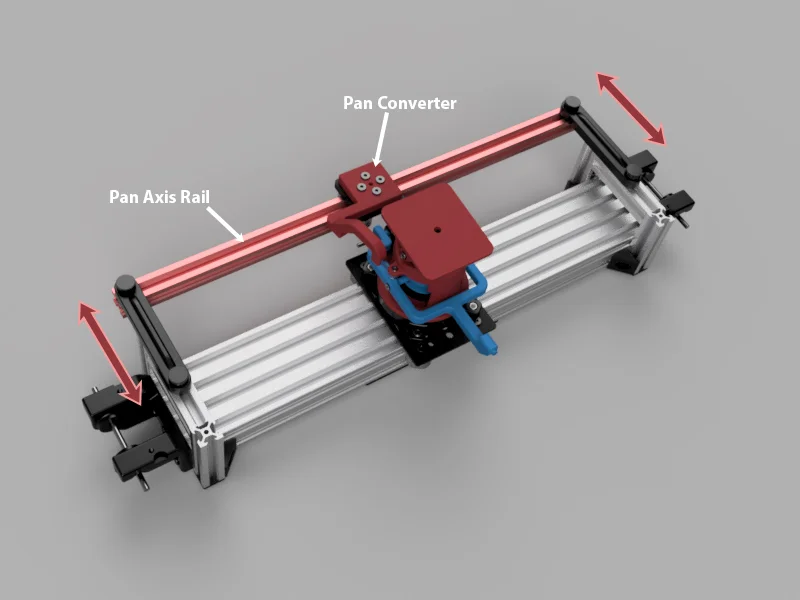Mechanical Pan Tilt Slider
Pan Tilt Slider Fusion360 Render
As the name implies, this project was designed to allow a camera to pan and tilt simultaneously (and independently) using only mechanical actuation. This allows for really dynamic videography, and while electronics could be used to achieve the same effect, we wanted something light and robust that could be brought on hikes. Currently, no commercially available products can achieve this motion, so we made our own and entered it in Pinshape's Mechanical Design Contest.
Action Shot!
Panning & tilting is actuated manually here by sliding, but motors could be used for the same effect.
At it's core the slider operates using simple push rod mechanisms; for panning, this was fairly straightforward. The pan converter forces the camera carriage to rotate as it is slid along the slider, due to it's attachment to the pan axes rail. The angle of the pan axis rail with respect to the slider rail directly controls the speed and angle of pan, so adjusting the position of this rail allows for the user to fully control panning. Tilting is controlled similarly (with a tilt axis rail and push rod), but the carriage for tilting is constrained to move vertically, instead of rotate.
While we didn't win the contest, the design was featured on Hackaday and this was a great learning experience for actually taking a concept from start to finish. We do plan on making a kit with this, but need to do some significant design rework first, as issues with design and materials were apparent during testing. This version of the slider was the first attempt to bring a concept to the physical world, and just had to work. The next version needs to work well, which means remembering that gravity impacts objects in the real world! Centering the tilting pivot point on the camera platform made perfect sense in CAD, but this choice actually induced a serious design flaw when the behavior of the center of gravity of a camera is considered.
Placing the pivot point in more or less the center means that the system is really stable when the center of gravity of the camera is close to the neutral plane (red axis above), and when the center of gravity is on either the right or left side of neutral (during tilting). Unfortunately, this also means that the pivot acts like a "crossover" point; when the center of gravity moves from the right to the left during tilting (and vice versa), the platform "flops" forwards or backwards as the distribution of forces within the system changes. This flopping is further exacerbated by the lack of rigidity in the system (FDM printed parts aren't known for precision or rigidity), so the end result is a really jerky shot when a larger camera is used. A quick solution for this would be to use more rigid materials or pre-load the system with a spring, but neither of those address the fundamental design flaw. All of this will be corrected in the next version, which I won't talk about too much just yet!
STL files for the pan tilt mechanism are available for download on Pinshape here.






